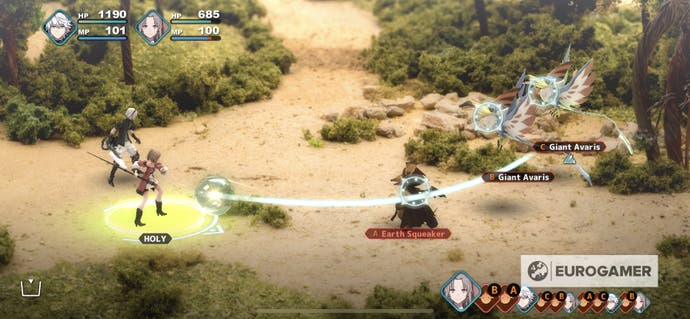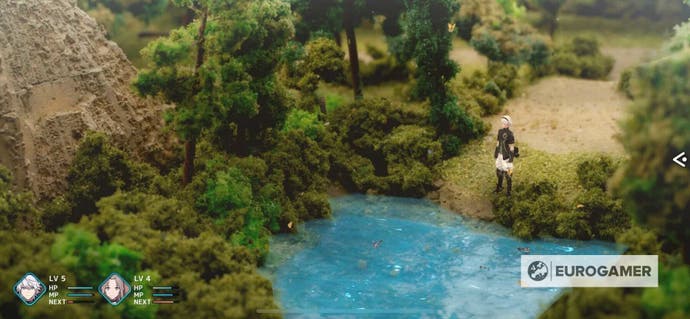Fantasian gets the original Final Fantasy team back in a JRPG for all
No time to diorama.
Fantasian is a game from Mistwalker, the studio founded in 2006 by Hironobu Sakaguchi, creator of Final Fantasy. It is, by its nature, a game with history behind it, vested interests and storied careers, and if you're particularly fond of that history then I'm sure you'll love it: it has turn-based battles and timid, oddly-dressed, techno-magical characters; it has small parochial towns with chatty villagers; it has a fantastical story, something about malevolent gods and machines taking over nature; and it has music from Nobuo Uematsu. Sakaguchi, for what it's worth, has suggested this one might be his last.
I have more or less no familiarity with any of this though, having dipped toes in a number of Final Fantasies and reliably found their water a little cold - but I'm sinking into Fantasian quite nicely. A welcoming kind of "onboarding" is not something I've associated with JRPGs, but - maybe because of its launch on Apple Arcade, with the different, presumably quite specific kind of audience that brings - Fantasian does it well. Deftly, in fact.

There are a moderate amount of systems here, and they're introduced in layers: turn-based battles, fine, but then positioning becomes important, and then a bit of very casual mechanics become important, as you learn to "bend" spells to get around blocking enemies or hit several at one. Likewise the wild encounters, which you just start to tire of before being introduced to a very clever twist called a "Dimengon Machine", a doohickey that bottles up enemies you would've encountered, up to a limit. You can choose to battle them at any point, or you're forced to when it gets full, so the convenience of getting around the world without battles is gained, at the cost of a little mind-game you play with yourself about when to take them all on at once. It also makes for a kind of self-directed difficulty meter - if things are feeling a little easy, use the machine and fight the random monsters a couple dozen at a time. If not, fight fewer but more often.

The thing you'll know Fantasian for of course, alongside its director, is its extraordinary use of physical dioramas for its overworlds. There's a faint sense that these are acting as smart cover for a fairly thin budget (there's a recurring sound effect that is absolutely just a recording of a TIE Fighter, for instance, and a lot of laboured text in place of more elaborate cutscenes). But they're gorgeous. Teeny tiny creations that you romp through, often in ultra close-up, where the brush-strokes, miniature sprigs of feathery moss and little pinprick clumps of artist's putty are visible, the beauty often secondary to the sensation of it all - that the world is overtly authored, specifically hand-placed. That you're watching your escapades through a god's eye.
Attention and care is the thing with Fantasian. All that long, layered history is noticeable, even if you're not personally familiar.



